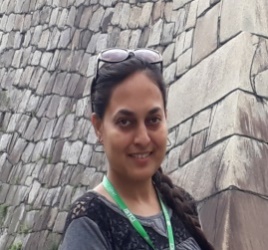Scientific Program
Keynote Session:
Title: The Emerging Field of Clay Hybrid Membranes in Wastewater Treatment
Biography:
Dr. Tanushree Choudhury, (PhD in Applied Chemistry), now is an Assistant Professor of Chemistry, Member of Indian Institute of Metals. She got her BSc in Chemistry (Honours), MSc in Chemistry, Specialist in Physical Chemistry at Visva- Bharati University, Santiniketan, West Bengal, India, Applied Chemistry Doctor’s degree (PhD) at Indian Institute of Technology (ISM), Dhanbad, India. Dr. Tanushree Choudhury got Meritorious Student Award from Council of Scientific and Industrial Research (CSIR) in 2003, Junior Research Fellowship Award from Indian Institute of Technology (ISM), Dhanbad in 2003, Summer Research Fellowship Award from Indian Academy of Sciences, Bangalore in 2012, and Inclusion of bio data in Marquis Who’s Who in World in 2011 and 2012. Currently Dr. Tanushree Choudhury’s research focuses on development of nanoclay as catalyst in industrial applications, and in membrane technology.
Abstract:
Most of NF membranes which are developed recently are composite membranes, whose support layer is covered with an active layer. Among different ceramic support materials that are currently used as support layer, α-alumina supports are integral part of the membrane which is made of artificial materials like alumina and thus adds to the high price of the membrane. This draws our attention in making low cost support material of natural clay which aims to be an excellent membrane support as it possesses high mechanical strength, high permeability, narrow pore size distribution and low manufacturing cost. Titania as active layer for ceramic membrane is preferred over Al2O3 membranes due to a slew of benefits ranging from its small crystallite size, self-cleaning property, to its being a highly efficient photocatalytic material. It has been observed that if Titania is immobilized on to clay support, its photocatalytic action increases tremendously. One of the problems encountered when photocatalysts are immobilized on support is the detachment of the microparticles from the support for high flow rates of liquid effluent. This can be overcome by using Montmorillonite clay as support material as it has extremely good binding capacity. Not enough effort has been made in literature to evaluate the specific features of these catalysts in relation to practical use and to optimize their design in relation to these characteristics. Thus optimization of such catalyst reactor may be helpful in separation of heavy metal ions from wastewater and also recover ions such as Pb2+ and Cd2+ which latch onto clay composite membranes.
Title: Study of wake measurement wind turbine model using PIV
Biography:
Chala Daniel has studying his masters of science in National Taiwan University of Science and Technology. He have ambition to build a long term career in Conventional and Sustainable Energies.
Abstract:
It is important to consider effect of wind turbine oncoming air flow since it generate wake flow which are a cause for reduction in power output for downstream turbine in wind farm and also it increase level of turbulence which is a reason for unsteady loading on downstream turbine. In order to study effect of wind turbine wake different kind of wind turbine model is considered. Velocity field in the wake and turbulence characteristics are measured using particle image velocimetry single rotor wind turbine model (SRWTM), twin wind turbine model (TWTM) and double rotor wind turbine model (DRWTM).The measurement is performed to cover area behind wind turbine rotor. The measurement indicated that characteristics of near wake flow and downstream of the rotor depend on number of blade rotor, interaction among turbine since they causes deceleration in airflow stream as they passes through turbine model. Flow field measurement for phase locked of different wind turbine model indicates characteristics of the turbulent model wake flow and vortex behind the wind turbine. In order to study the wake characteristics for co rotating and counter rotating DRWT the velocity deficits is investigated in comparison to SRWT. Finally effect of wake meandering, which is crucial factor in wind farm since it increase fatigue load and yaw load on downstream turbine, for wind turbine which include wake motion along vertical and horizontal direction is studied.



